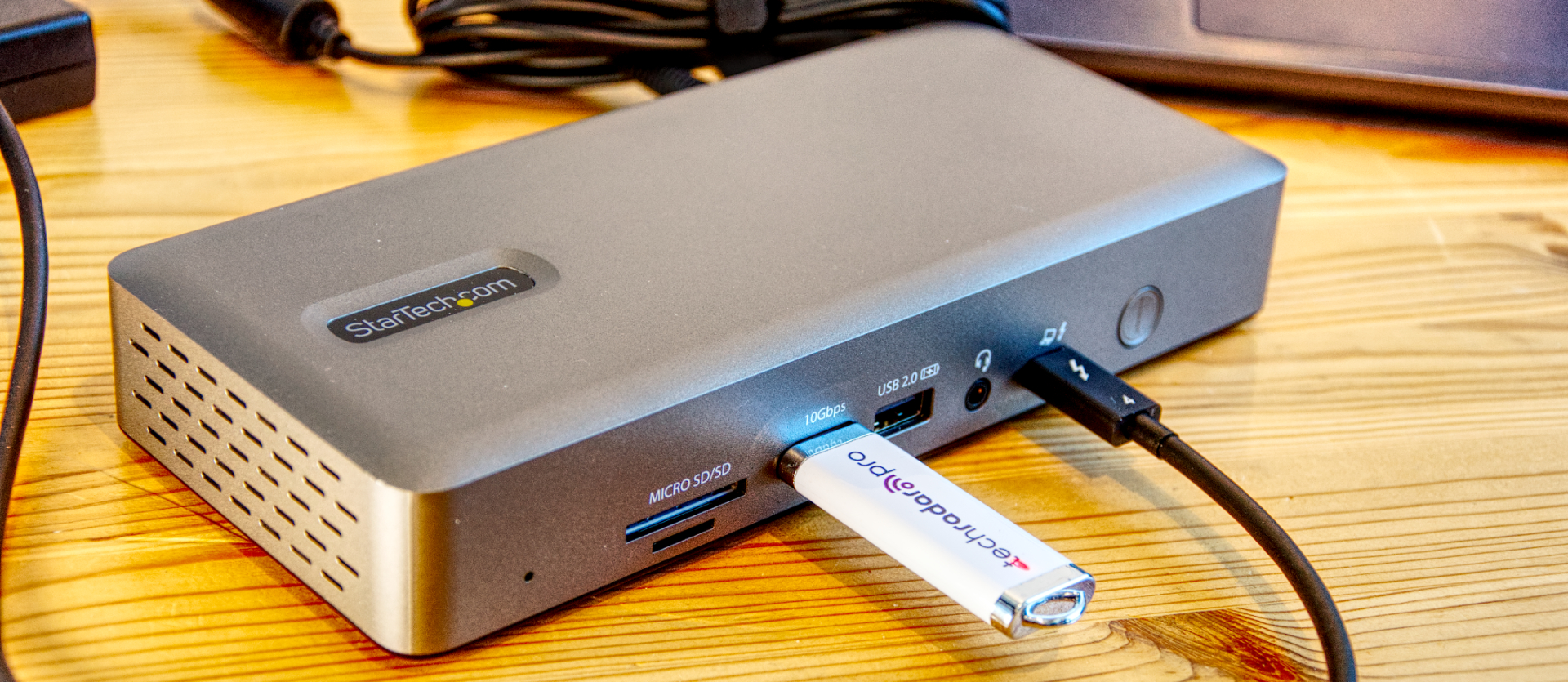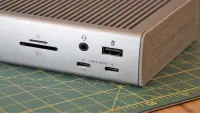TechRadar Verdict
A flexible option that delivers many of the features that dock users want from Thunderbolt 4 technology. However, it doesn’t include any Thunderbolt downlinks to daisy-chain devices, and it's mostly plastic, unlike most of its metal competitors.
Pros
- +
Thunderbolt 4 and USB-C
- +
Lots of ports
- +
98W charging
Cons
- -
Plastic construction
- -
No Thunderbolt downstream ports
- -
Only one USB-C port
- -
Higher cost than is justified
Why you can trust TechRadar
Startech Thunderbolt 4 Multi-Display Docking Station: 30-second review
Startech offers an impressive selection of USB and Thunderbolt hubs. We previously reviewed its excellent Thunderbolt 3 option, the TB3CDK2DH.
The new dock carries the impressive title of Thunderbolt 4 Multi-Display Docking Station, or it can be identified with the code TB4USB4DOCK.
We've tested all the best laptop docking stations - and at around £300 or $320, this device is more expensive than the alternative OWC, Kensington, and Plugable docks but is cheaper than the Caldigit TS4 option.
The big selling point of this dock is that it works with both Thunderbolt and USB, making it remarkably flexible.
The only caveat to this much USB use is that USB doesn't offer the amount of bandwidth that Thunderbolt can carry, limiting how many of the many ports it sports can be used simultaneously before performance is impacted.
That makes this unit ideal for a USB laptop user who will soon move to a Thunderbolt-capable machine.
This dock has fifteen ports, not including the uplink. Those include four monitor connections and seven USB ports, covering most eventualities. There is also a 2.5GbE LAN port, ideal for providing a single cable connection to the local network.
Sign up to the TechRadar Pro newsletter to get all the top news, opinion, features and guidance your business needs to succeed!
When connected, it can supply up to 98W of power to the laptop with the same cable used to move data, enabling laptops to charge even when in use.
Our only reservation about the StarTech Thunderbolt 4 Dock is that, unlike most other high-end Thunderbolt docks, this one is mostly made of plastic and not metal.
Startech Thunderbolt 4 Multi-Display Docking Station: Price and availability
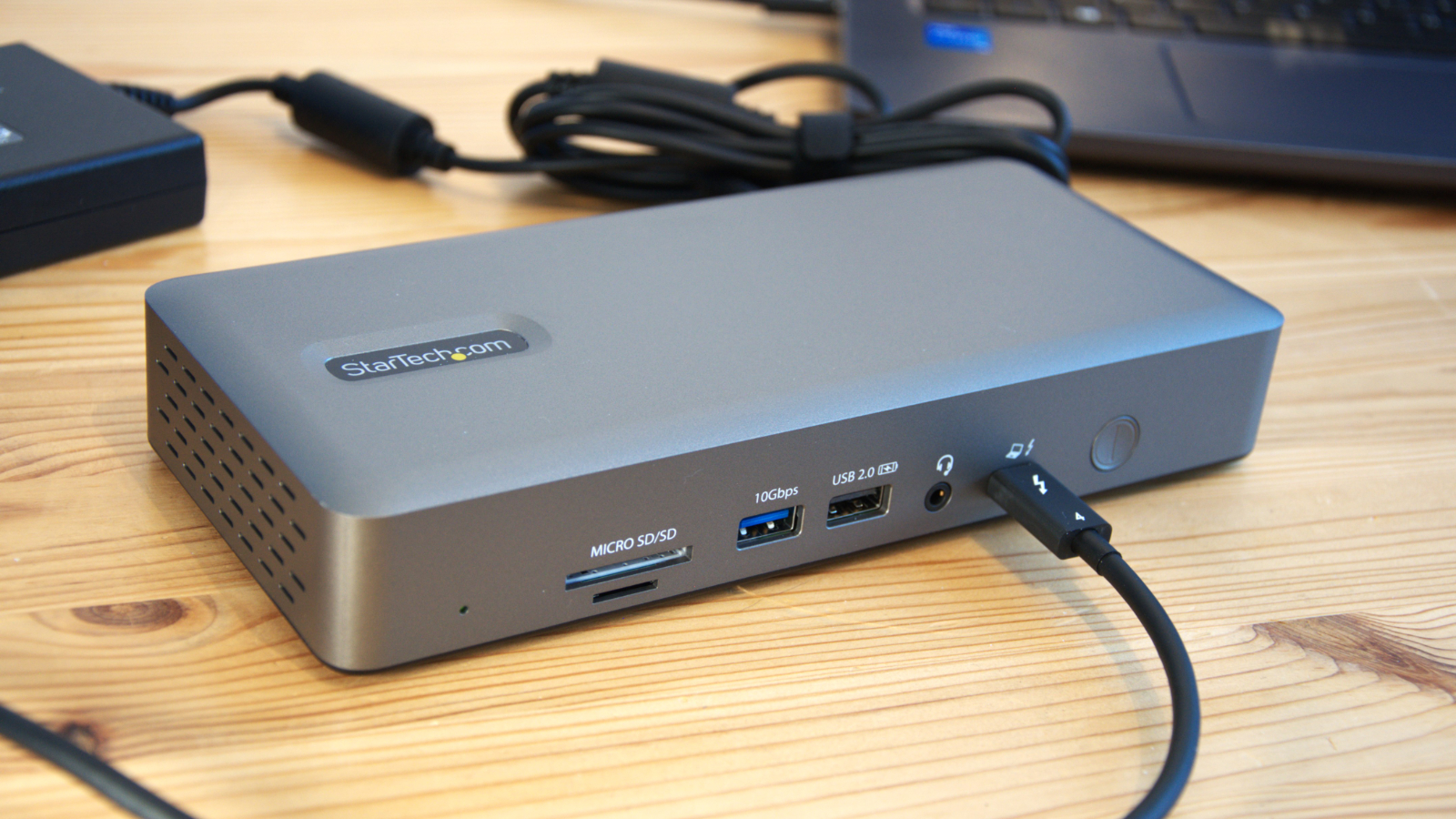
- How much does it cost? $319/£299
- When is it out? It is starting to be available now
- Where can you get it? Direct from StarTech or through online retailers like Amazon.
It is possible to purchase the Startech Thunderbolt 4 Multi-Display Docking Station directly from the maker's website. However, it is cheaper through the Amazon Startech shop, and for Prime members, it comes with free delivery.
The current price on Amazon.com is $318.47, and it is available for £298.99 for UK Amazon customers.
Compared to the branded alternatives, it is cheaper than the Caldigit TS4, which costs closer to $400. However, the excellent OWC 11-Port Thunderbolt Dock is only $229.99, the Plugable Thunderbolt 4 Dock is $289.95, and the Kensington SD5760T Thunderbolt 4 Dual 4K Docking Station is only $206.12.
The Kensington SD5760T has recently experienced a significant price drop from $279.99, indicating that a new Thunderbolt dock might be around the corner from that name.
Overall, unless you insist on the Caldigit TS4, the Startech solution is more expensive than most fully-featured Thunderbolt 4 docks, and it might be hard to justify the extra cost based on typical use.
- Value: 3 / 5
Startech Thunderbolt 4 Multi-Display Docking Station: Specs
| Compatibility | TB4, USB-C or USB. 4.0 |
| Number of Ports | 15 |
| Ports | 1x TB4 upstream, 1x USB-C downstream, 3x USB 3.2 Gen 2 Type-A, 2x USB 3.2 Gen 1 Type-A, 1x USB 2.0. 2x HDMI 2.1, 2x DisplayPort 1.4, 1x audio in/out jack, 1x 2.5GbE RJ45 Ethernet port, 1x UHS-II SD Card reader (320MBps), 1x UHS-II MicroSD Card reader (320MBps |
| Downstream power | 7.5W USB 2.0 |
| Upstream power | 98W Thunderbolt |
| Size | 210 x 96 x 34mm (W x D x H) |
| Weight | 200g |
| Accessories | Adapter 180W 20V 9A |
Startech Thunderbolt 4 Multi-Display Docking Station: Design
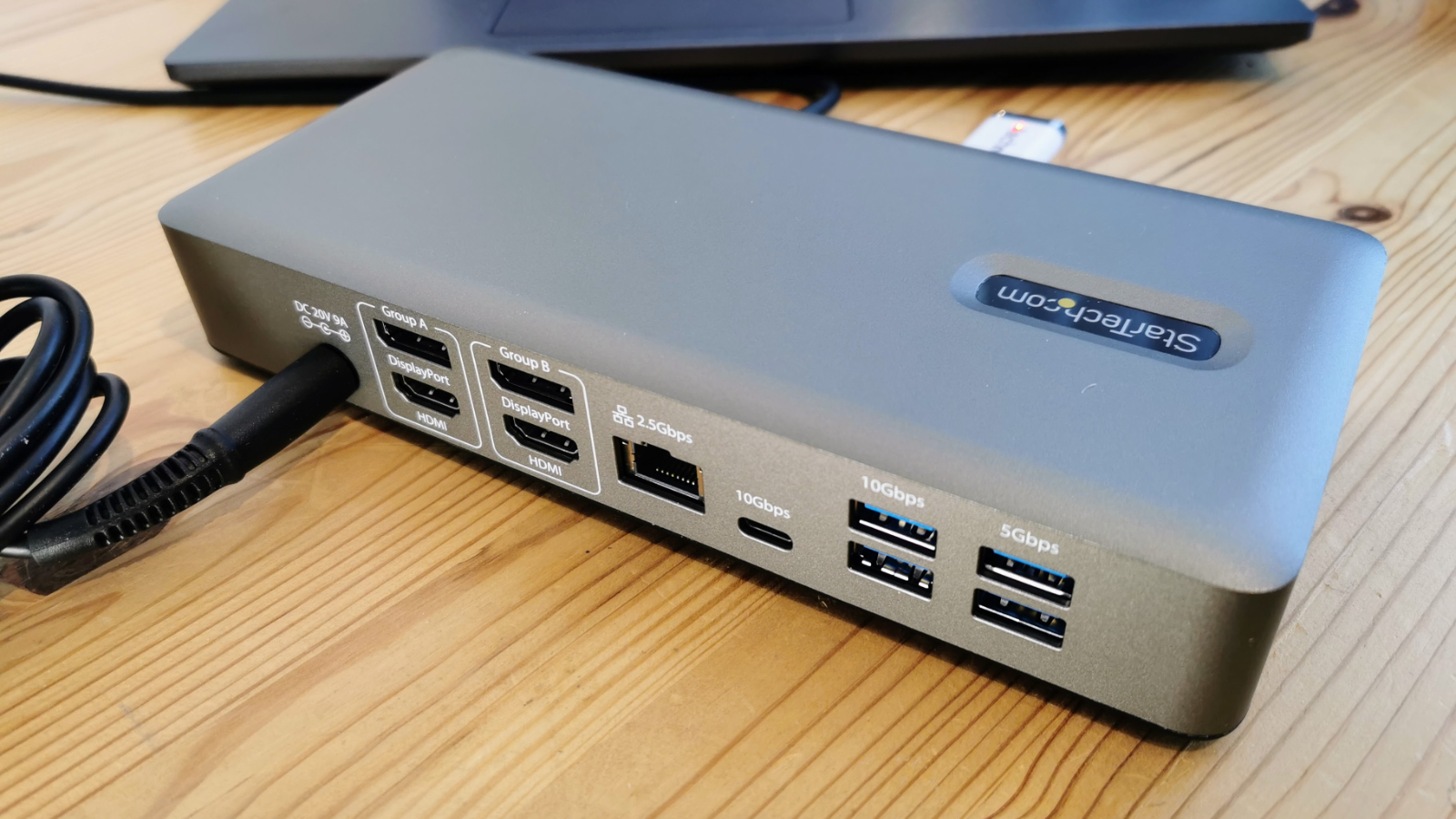
- Bandwidth oversubscribed
- Strange USB-A obsession
- Lacks Thunderbolt downlinks
As docks go, this one is an attractive but simple design where the placement of ports makes more sense than it can on some devices.
The enclosure is a round-cornered box containing all the electronics, with the ports evenly divided between the front and back. On the right side are two security slots, both the standard K-slot and the Nano-K slot, and air vents that are mirrored on the left face.
Air can also come from vents in the underside, with rubber feet providing sufficient clearance to allow movement. Like so many docks, this one is passively cooled, so it doesn't generate any fan noise while in use.
On the front are two SD card slots for different sizes, two USB-A ports, a headphone jack and the USB-/Thunderbolt uplink. There is also a power button, a feature many designs have stopped providing.
On the rear are two HDMI, two DVI, a USB-C downlink, four USB-A (two each of 10Gbps and 5Gbps), and a single 2.5GbE LAN port.
The included LiteOn power supply, rated for 20V at 9A (180W), connects on the rear using a barrel connector.
The best aspect of this design is the sheer number of ports, which makes it ideal for those with many peripherals who want to connect easily.
Conversely, the enclosure's plastic construction is a bit of a disappointment, and painting it silver doesn't compensate for the inherent heat distribution and physical resilience that making it from aluminium might have added.
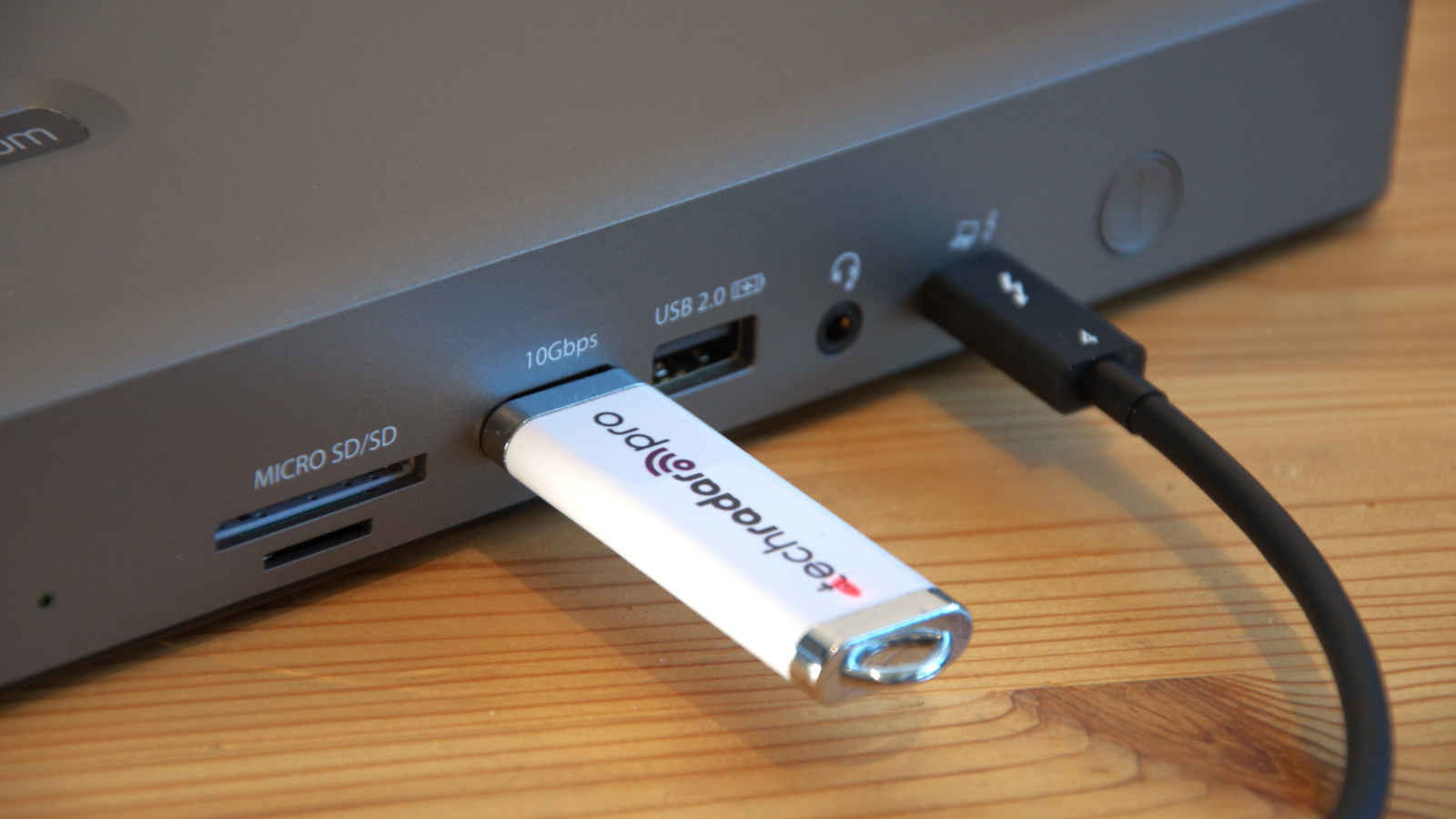
- Design: 4 / 5
Startech Thunderbolt 4 Multi-Display Docking Station: Features
- Bandwidth oversubscribed
- Strange USB-A obsession
- Lacks Thunderbolt downlinks
Most Thunderbolt 4 dock designs all use the same Intel JHL8440 chips, but it comes down to how each company divided up the bandwidth cake between the ports it decided to include.
All the external ports are provided by different chip makers that interface to the Intel Thunderbolt host, with silicon created by Realtek, Ti, Genesys Logic and Cypress.
Immediately upon using this hardware, I noticed an issue with this dock about that allocation, and this isn't the typical problem about over-subscription that needs to be mentioned for almost every dock.
If you add up the potential bandwidth requirements of the ports, then the 40Gbps of Thunderbolt bandwidth is used up more than once, and for those using USB-C with only 20Gbps, the problem is twice as bad.
But what shocked this reviewer was that this is a Thunderbolt dock without any Thunderbolt downstream ports, so it isn't possible to daisy-chain Thunderbolt devices from this dock.
Therefore, curiously, it was made specifically for a user who has a Thunderbolt-enabled laptop but only USB peripherals. The omission seems odd, as the original StarTech Thunderbolt 4 Dock, now discontinued, had three TB downlinks.
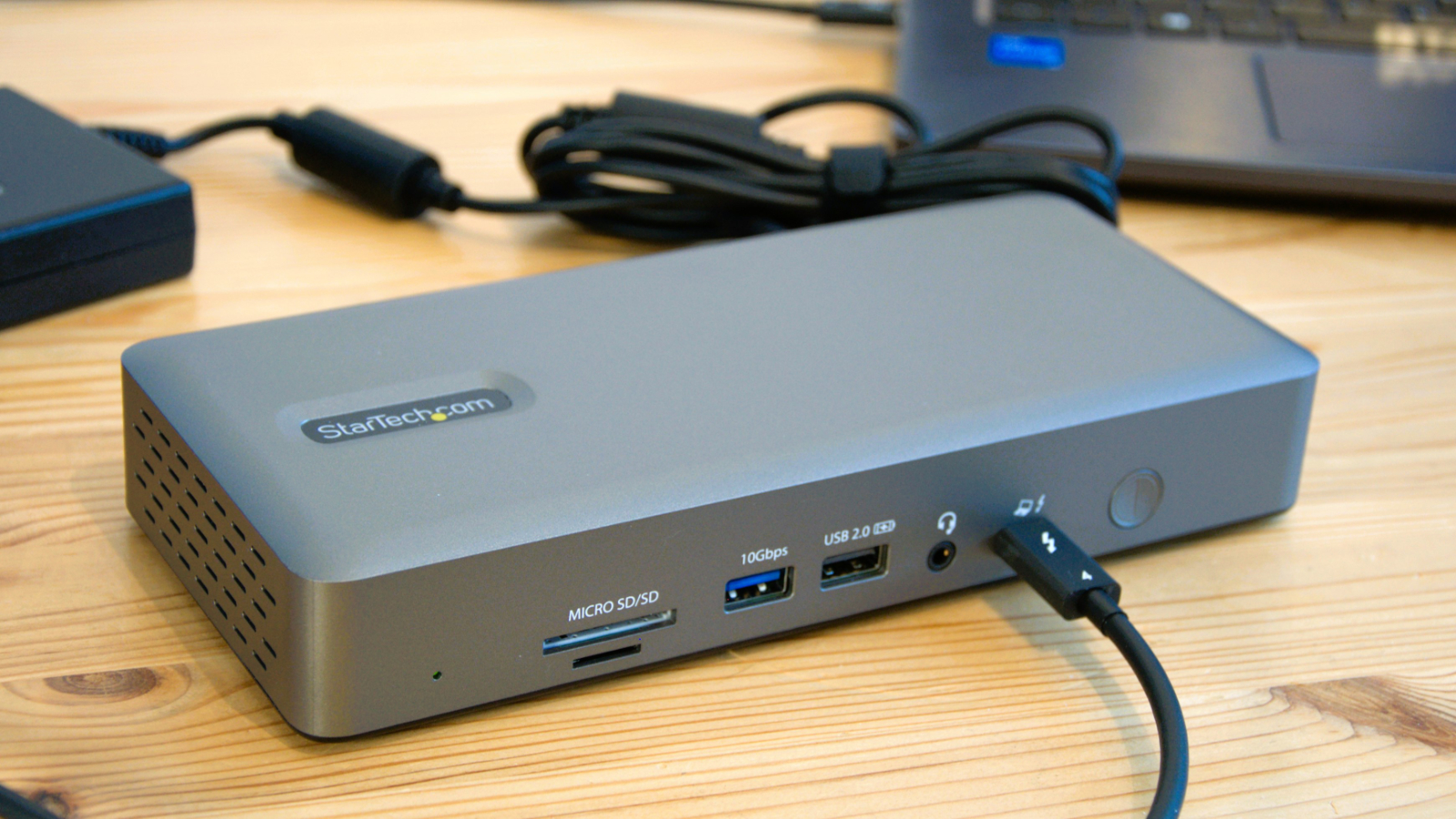
The other part of this design that doesn't quite add up is the large number of USB ports—seven in total—but only one USB-C port. Given the general market movement to USB-C, it seems like a misstep not to support it proportionally.
It seems unlikely that Startech engineers correctly identified the spread of 2.5GbE LAN ports but didn't notice the number of external SSDs using USB-C.
- Features: 3 / 5
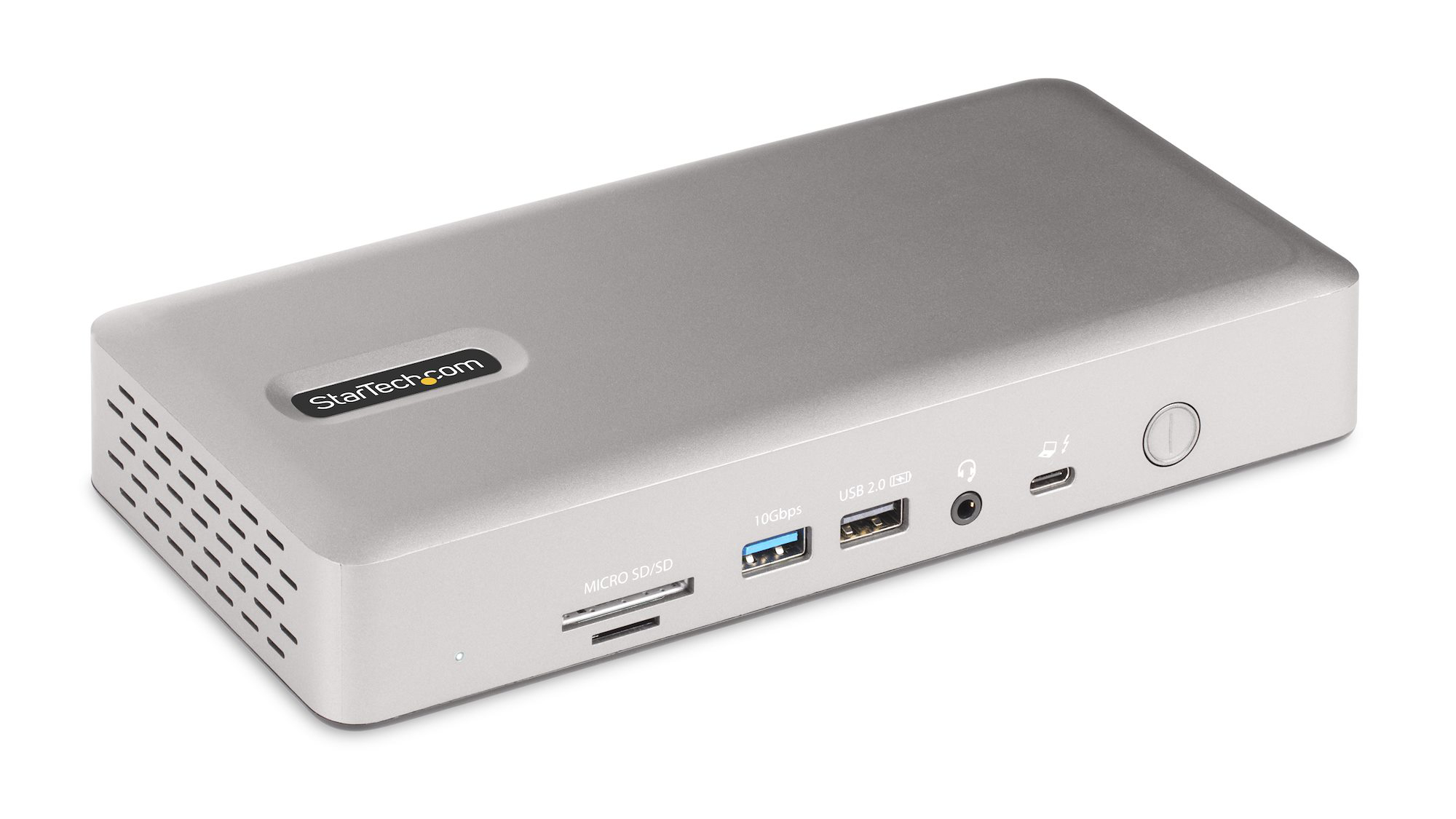
Startech Thunderbolt 4 Multi-Display Docking Station: Performance
- Lots of USB
- Up to four monitors
- Limitations of no TB downlinks
Calculating performance on a system with so many ports and multiple means of connection (Thunderbolt and USB) is a fruitless task unless you have a particular use case in mind.
Where this dock slightly differs from most competitor designs is that it doesn't pass the full bandwidth of Thunderbolt to downstream ports, holding that bandwidth to either splash between multiple USB ports or the video connections.
Under Thunderbolt, using a monitor attached to the dock doesn't require any software to be loaded onto the PC, making it effectively plug-and-play. But it is worth noting that unless your laptop has a discrete video card, driving four displays isn't practical with most integrated GPUs. This is only possible for PC users, not anyone with an Apple Mac.
For Apple users, a dock with downstream Thunderbolt ports would increase the monitor count above the two that this dock offers them. There are dual Thunderbolt chipset docks around that would offer four displays to Apple Mac users, but this isn't one of them.
Under Windows, it is possible to have either three 4K/60Hz monitors or four, with one of the monitors being 4K/30Hz. Both Windows and Macs can do dual displays 5K/60Hz. The highest resolution on PC is 8K/60Hz (7680 x 4320 resolution), and on the Mac, the best single-screen resolution is 6K/60Hz (6144 x 3456).
What we're not getting into here is some arbitrary restrictions Apple placed on early M1 hardware that dictate they only support two displays, so it might be worth going to the StarTech website and reading all the product notes about this aspect before investing.
Startech Thunderbolt 4 Multi-Display Docking Station: Verdict
This strange design has a feature set that contradicts the majority of Thunderbolt 4 docks made by other brands and even some made by Startech.
This hardware is obsessed with USB support but is almost exclusively for Type-A devices, illogically. The lack of a Thunderbolt downlink port seriously undermines its use in any environment with Thunderbolt-capable peripherals.
What Starttech got right was a large number of ports, even if the mix isn't ideal, and that it can pass 98W of power to a connected laptop.
But the only future-proofing that Startech included was the 2.5GbE port.
For a host of reasons, we like metal enclosures on desktop docking stations, and this one is plastic. Making this from plastic might have saved money, but those savings weren't passed on to its customers.
Startech Thunderbolt 4 Multi-Display Docking Station: Report card
| Value | More expensive than it should be | 3 / 5 |
| Design | Design A well-considered layout, but the outside is entirely plastic. | 4 / 5 |
| Features | Oddly USB Type-A fixation and no Thunderbolt downlinks make this design less than ideal | 3 / 5 |
| Performance | Lots of monitors for PC owners, fewer for Mac users | 3.5 / 5 |
| Overall | Given the high asking price, we expected more Thunderbolt in this dock. | 3.5 / 5 |
Should you buy a Startech Thunderbolt 4 Multi-Display Docking Station?
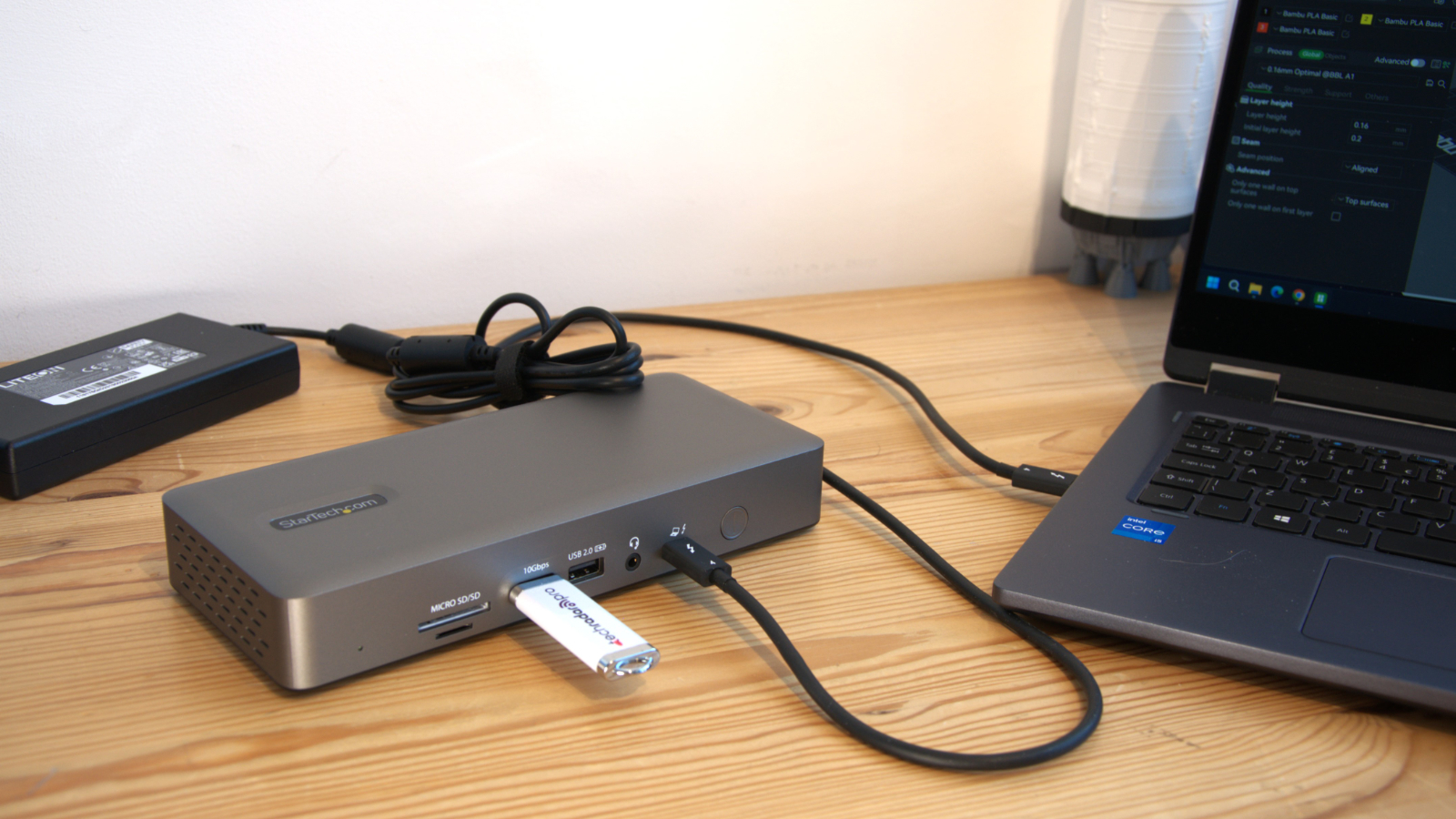
Buy it if...
You need lots of USB ports
With seven USB ports, this dock is ideal for those with many USB peripherals, including external drives, printers, and input devices. The only caveat to that statement is that there is only one USB-C port, making this almost exclusively a USB Type-A device dock.
You want to connect four monitors
Assuming you have a PC and not a Mac, connecting four monitors to this dock is remarkably straightforward and doesn't require extra software installed on Windows.
However, integrated GPU performance driving four 4K screens might not be as smooth as you might need.
Don't buy it if...
You have Thunderbolt peripherals
Without any Thunderbolt downlinks, this dock cannot attach multiple Thunderbolt peripherals to a single Thunderbolt port, as it can on other docks.
Those with Thunderbolt external drives and monitors need to consider other options.
You are working to a budget
There are Thunderbolt docks available for closer to $200 that offer many of the features of this design and a few that it doesn't possess. Paying this much for one isn't necessary unless its for a feature unique to the TB4USB4DOCK.
Also consider
OWC Thunderbolt Dock
A much cheaper but still high-quality dock from OWC, this design has eleven ports and offers 90W charging for a Thunderbolt-connected laptop. What it lacks is a dedicated monitor port, but adapters for HDMI or Display port from Thunderbolt are available.
Check out our OWC Thunderbolt Dock review
CalDigit Thunderbolt Station 4
The CalDigit Thunderbolt Station 4, or TS4 as it is also known, is a full-featured Thunderbolt dock that works with Thunderbolt 4/3 and USB-C.
It is not designed to be a portable dock but specifically to support a laptop user who comes to the office and wants a single cable connection to the network and a host of peripherals. To that objective, it has no less than 18 ports and can deliver up to 98W for charging a connected system.
Check out our CalDigit Thunderbolt Station 4 (TS4) review
Mark is an expert on 3D printers, drones and phones. He also covers storage, including SSDs, NAS drives and portable hard drives. He started writing in 1986 and has contributed to MicroMart, PC Format, 3D World, among others.
